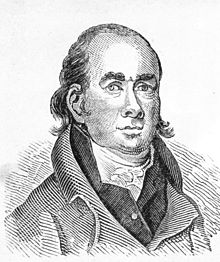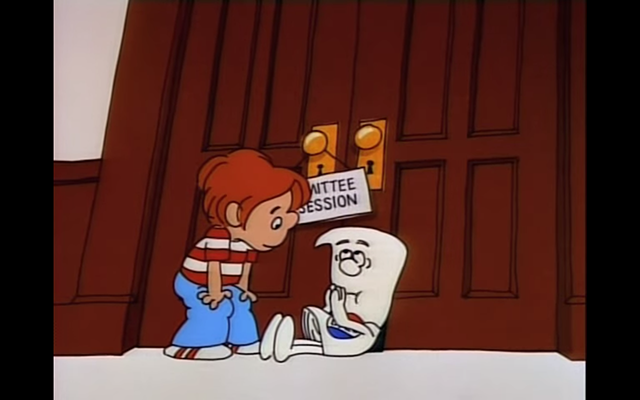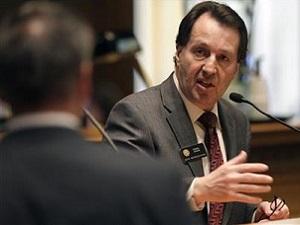Archive for March, 2018
Republic vs. Democracy
Posted by Joshua Sharf in Uncategorized on March 28th, 2018

Say, “our democracy,” and it shall follow as the night the day that a libertarian will pedantically correct you, “We’re a republic, not a democracy.” This is usually said hearkening back to the Founders, and of course it’s technically correct. We are, or at least were designed to be, a representative republic and not a direct Athenian democracy.
I can state with some confidence that the number of people it’s persuaded is in the low single-digits. Neither those being corrected nor those listening in are likely to second-guess their opinions on whatever subject is at hand, and there’s a good reason for that: our elections are democratic, we frequently have ballot measures that are decided by majority democratic vote, and people use the word “democracy” in common parlance all the time without thinking, “What Would Pericles Do?”
Most of the time, it’s both annoying and irrelevant.
A recent Washington Post oped decried the practice of “gunsplaining,” or pointing out that gun control activists often don’t know very much about the items they’re trying to regulate or ban. The author argued that the sole purpose of correcting factual mistakes is to bully gun-control advocates into silence. In my experience, bringing up the fact that there’s no such thing as a “full semi-automatic mode,” or noting with some derision that a Congressman, who’s actually empowered to make laws on this subject, describes a non-existent, “shoulder thing that goes up,” serves a different purpose.
Most of the gun-control activists and legislators in this country are on the left, which has spent the last century or so quietly and not-so-quietly shifting control over our lives to a bureaucracy of experts. We are expected not merely to defer but to actually give thanks for this growing rule-by-enlightened-bureaucrat. But when the subject turns to firearms, these very same people turn ignorance into a virtue. “Gunsplaining”, in its best form, is used to make sure that we’re all talking about the same thing, as with any technical subject, and to make sure that people who want to impose new laws or regulations don’t make them overly-broad. It’s not contemptuous; it pays the other party the respect of assuming that they’re acting in good faith.
To shout, “We’re a Republic, not a democracy!” in the middle of a gun control discussion doesn’t do any of that, because it’s not really relevant to the subject at hand.
There are plenty of cases where it does matter. If the discussion is about eliminating the Electoral College in favor of a mythical National Popular Vote, or Colorado’s recent Amendment 71, changin
g the way that Constitutional amendments are adopted, govsplaining is entirely appropriate. Like gunsplaining, it assumes that the other side is discussing the issue in good faith, may simply not recognize the difference between the two or the difference it makes, and tries to reach some understanding of terms that matter. Govsplaining should be confined to those instances, but usually isn’t.
Contrary to popular opinion, this confusion is not a recent development, nor does it represent a catastrophic failure of our educational system, although there are plenty of those. Allow a lengthy quotation from Gordon S. Wood’s Empire of Liberty towards the end (pp. 717-18), where he’s discussing the changes between 1789 and 1815 in our early Republic:
If indeed the Americans had become one homogeneous people and the people as a single estate were all there was, then many Americans now became much more willing than they had been in 1789 to label their government a “democracy.” At the time of the Revolution, “democracy” had been a pejorative term that conservative leveled at those who wanted to give too much power to the people; indeed Federalists identified democracy with mobocracy, or as Gouverneur Morris said, “no government at all…”
But increasingly in the years following the Revolution the Republicans and other popular groups, especially in the North, began turning the once derogatory terms “democracy” and “democrat” into emblems of pride. Even in the early 1790s some contended that “the words Republican and Democratic are synonymous” and claimed that anyone who “is not a Democrat is an aristocrat or a monocrat.” …soon many of the Northern Republicans began labeling their party the Democratic-Republican party. Early in the first decade of the nineteenth century even neutral observers were casually referring to the Republicans as the “Dems” or the “Democrats.”
With these Democrats regarding themselves as the nation, it was not long before people began to challenge the traditional culture’s aversion to the term “democracy.” “The government adopted here is a DEMOCRACY,” boasted the populist Baptist Elias Smith (pictured) in 1809. “It is well for us to understand this word, so much ridiculed by the international enemies of our beloved country. The word DEMOCRACY is formed of two Greek words, one signifies the people, and the other the government which is in the people…. My Friends, let us never be ashamed of DEMOCRACY!”
We all know the difference between a representative republic and a direct democracy. The Americans of 1790-1810 knew it, too. I suspect when pressed, most Americans even now understand the difference. It’s important not to let corruption of the language degrade our understanding of institutions, and eventually our institutions themselves. But it’s most important when it’ll do some actual good.
SB200 Passes the Senate With No Democrat Votes
Posted by Joshua Sharf in PERA on March 27th, 2018
 SB200, the PERA reform bill, has passed the State Senate on a party-line 19-16 vote, with Sen. Cheri Jahn (U) joining the majority Republicans in support.
SB200, the PERA reform bill, has passed the State Senate on a party-line 19-16 vote, with Sen. Cheri Jahn (U) joining the majority Republicans in support.
It faces a tougher road in House, where the Democrats have a 10-seat majority, pending a Republican successor to evicted Rep. Steve Lebsock (D-R) in House District 34. But the bill has Democratic support, even among leadership. Majority Leader K.C. Becker (D) is one of the sponsors, and she’s been working with Sen. Jack Tate (R) since the beginning to get something written that can both pass and do more than just tweak things until the next crisis.
With a minority in the Senate, and the Republicans solidly behind the bill as amended, it was easy for Democrats to vote to oppose. They took no risk in doing so. What they could do was propose amendments that laid down markers for what the unions party expects to see changed coming out of the House and headed into a presumed conference committee. I covered those in a previous post, but they amount to:
- Reducing the employee contribution increase
- Increasing the employer contribution
- Not increasing the retirement age
- Not expanding access to the Defined Contribution plan
- Increasing the COLA cap
- Eliminating the new oversight committee
Now is where the Senate Republicans and House Democrats who have been leading the effort will really be tested. The needle to thread is much narrower, with Republicans more likely to vote against a substantially weakened bill, but Democrats potentially demanding more change to vote for it.
The Senate Democrats, in particular Sen. Rachel Zenzinger, complained that they were willing to compromise but that the Republicans had rejected such efforts. In fact, the final bill represented serious compromise from the Republican desiderata going in.
Will Becker and her co-sponsor Rep. Dan Pabon (D) be able to corral enough House Democrats to avoid poison-pill amendments, and have Sens. Tate and Priola been clear and convincing about just what those red lines are? Should a weakened bill make it out of conference, will enough Senate Republicans vote against it to offset any pickup in Senate Democrats. Recall that in the Senate Finance Committee, Sen. Jahn actually voted to support two amendments by Sen. Lois Court (D-Not Math) that ended up being proposed again on the floor.
We’re far from done. Let’s just hope they’re not still marking up amendments the first week in May.
Sen. Dan Kagan Emerges as Defender of PERA
Posted by Joshua Sharf in Colorado Politics, PERA on March 26th, 2018

In Friday’s debate on SB200, the PERA reform bill, Sen. Daniel Kagan (D-Cherry Hills) emerged as the floor leader of those fighting to defend the current system. Neither his positions nor his prominence on this issue should entirely be a surprise to observers.
Kagan’s district isn’t particularly left-wing: it’s got a 32000 – 27000 Democrat-to-Republican registration advantage, but also has 35,000 Unaffiliated voters. Kagan won his race against Republican Nancy Doty 53% – 47% in 2016, running slightly behind Hillary Clinton, who got 56% of the three-way vote among herself, Donald Trump, and Libertarian Gary Johnson. Located in suburban Denver, it’s a battleground district, but because of its loction also has a lot of PERA members and retirees.
Kagan reliably votes the Democratic line and has since his time in State House of Representatives, but has a way of conducting himself with civility and generally respects even hostile witnesses who come before his committees. The plummy British accent born of a well-to-do aristocratic upbringing probably doesn’t hurt as a public face, either.
On Friday, Kagan proposed three separate amendments, all of which could well have been written by the unions. The first would have restored an increase in the employer contribution, a 1.5% increase as compared with the 2.0% increase that was amended out in the Finance Committee. He used the traditional phrases about “shared sacrifice,” but also noted that the SAED enacted in 2006 was supposed to come from money from foregone raises, claiming that the nominal current 20.15% overstates the actual employer contribution.
This is an argument rejected by both the governor’s office and even PERA itself, whose former executive director, the late Greg Smith, testified before committee that it was his impression that school boards around the state were eating the SAED themselves rather than taking it out of teacher pay.
Next, he moved an amendment to raise the COLA cap from 1.25% to 1.75%, although he didn’t speak to that amendment.
Finally, he proposed L-013, comprehensively different plan altogether. These sorts of amendments are called “strike-through” amendments because they strike-through the whole of the bill, seeking to replace it with something else. In this case, the “something else” would restore the employer contribution to 1.5%, lowered the increase in the employee contribution to 1.5%, capped the COLA at 1.75%, increased the Highest Average Salary calculation from 3 years to 5 years (as opposed to the 7 in the bill), rescinded the increase in the retirement age, kept the calculation on net pay rather than gross pay, and prevented the expansion of the DC plan availability to all employees.
He defended this proposal by arguing that the plan’s actuaries confirmed that, according to their assumptions, it would put PERA on a path to 100% funding in 30 years. He claimed that PERA was not in “crisis” as in 2010, but did lack “resiliency,” especially since the adoption of more “conservative” assumptions. The language here is important. The term that the PERA Board would use for its November 2016 revisions in the expected rate of return and mortality tables is “realistic,” but this is incorrect – they are more conservative, and still far too optimistic. It is those assumptions that the actuaries are operating under.
He also derided the expanded DC plan availability as a “poisoned chalice,” that most PERA members rejected in favor of the shared responsibility and pooled resources of a DB plan that would always be there for people. I think it should be obvious to all but the most blind observer that the experience of the last 20 years shows that, absent continual adjustments, benefit cuts, and increased taxpayer contributions, the DB plan will not “always be there.”
Debate on this amendment – backed by the unions – will continue Monday morning when the Senate reconvenes.
Bruce Catton and U.S. Grant
Posted by Joshua Sharf in Civil War, History on March 25th, 2018

Having finished Ron Chernow’s biography of Grant, I decided to go back to my library and re-read Bruce Catton’s shorter treatment of the subject, U.S. Grant and the American Military Tradition. Catton did most of his writing in the 50s and 60s, so some of the scholarship is dated, but most of his conclusions have held up.
More than that, Catton’s writing verges on the poetic, both summarizing and illuminating a subject with an economy of words I often wish I had. For instance, in describing frontier Ohio of the 1820s and 1830s:
Men who could do everything they chose to do presently believed that they must do everything they could. The brightest chance men ever had must be exploited to the hilt. And the sum of innumerable individual freedoms strangely became an overpowering community of interest.
When dissecting the rights and wrongs of secession, its present-day defenders (who do not defend the institution of slavery, it should be emphasized) tend to focus on the clinical, legal aspects of the matter. Catton captures what they miss, and why the North and especially the West was willing to fight:
Against anything, that is, which threatened the unity and the continuity of the American experiment.
Specifically, they would see in an attempt to dissolve the Federal Union a wanton laying of hands on everything that made life worth living. Such a fission was a crime against nature; the eternal Federal Union was both a condition of their material prosperity and a mystic symbol that went beyond life and all of life’s values.
On the post-Shiloh commanders:
McClellan, Halleck, and Buell, then, were the new team, and that hackneyed word “brilliant” was applied to all three. The Administration expected much of them. It had yet to learn what brilliance can look like when it is watered down by excessive caution and a distaste for making decisions, and when it is accompanied every step of they way by a strong prima donna complex.
And on how Americans view war. Catton believes it goes a long way towards explaining why Grant – representative of his people – was doomed to substantially fail at the big post-war task of Reconstruction and restoration:
…the will-o’-the-wisp again, recurrent in American history. Victory becomes an end in itself, and “unconditional surrender” expresses all anyone wants to look for, because if the enemy gives up unconditionally he is completely and totally beaten and all of the complex problems which made an enemy out of him in the first place will probably go away and nobody will have to bother with them any more. The golden age is always going to return just as soon as the guns have cooled and the flags have been furled, and the world’s great age will begin anew the moment the victorious armies have been demobilized.
Sound familiar?
Catton was not, of course, infallible. He had this to say about President-Generals, whose training is to treat Congress as supreme, the executive as the instrument of Congress’s declared war aims:
It made it inevitable that when he himself became President he would provide an enduring illustration of the fact that it can be risky to put a professional soldier in the White House, not because the man will try to use too much authority in that position but because he will try to use too little.
Catton wrote these words in 1954, with full awareness of who was then president. But history doesn’t bear out his fear, entirely. Washington maintained a strong sense of the office’s limitations, but worked to strengthen both the federal government and the executive. Neither of the two previous Whig presidents – both generals – lived long enough to have much impact in the office. And Eisenhower was working with an already-stronger executive, which he worked to professionalize, treating his cabinet a little like a corporate boardroom of competing ideas.
He differs with Chernow on a few points, and Catton is somewhat better at drawing connections. Catton considers the Santo Domingo treaty not merely ill-advised but actually corrupt, for instance. Both note that Grant manumitted the one slave he ever owned as quickly as he could (a gift), but only Catton points out that Grant did so even though he could really have used the money from a sale at that point in his life.
Catton is also harder on the Radical Republicans, and somewhat more forgiving of Andrew Johnson, than Chernow is, possibly because Catton was unaware of the postwar wave of white supremacist violence that swept over much of the Deep South. He argues that the Radical Republicans were at least as interested in using blacks as a means to political power as they were in their welfare – not the last time that would happen in American history. Catton also claims that Johnson adopted Lincoln’s view of postwar reconciliation, where Chernow states that Johnson adopted a softer line through misbegotten racial solidarity. Whether this is from cynicism or greater political savvy, or from both, it’s hard to know.
SB200 and PERA Reform – The Good, The Bad, and The Missing
Posted by Joshua Sharf in PERA on March 23rd, 2018
Today, the State Senate is scheduled to debate SB18-200, the PERA reform bill, on the floor. As befits a big, complicated problem, it’s a big, complicated bill. As with any big, complicated bill it’s a mix of good and bad. In this case, there are also elements that are missing that would vastly improve the bill’s effectiveness and fairness.
And as with any bill, especially one in a divided legislature, there are political considerations. The bill is the result of several months of bipartisan effort, led by Republican Sen. Jack Tate and Democratic Rep. K.C. Becker, but also with the contributions of several Democratic senators and Republican representatives.
The Good

Photo Credit: Todd Shepherd
The Good in SB200 can be broken down into three parts. First, there’s the usual dial-turning and knob-twisting, but in this case, there’s also some screw-tightening and refitting. Second, there will be expanded legislative oversight. Third, there will be an expansion of the Defined Contribution plan. Let’s take each of these in turn.
The Dials and Knobs
The bill will increase contributions and decrease benefits in a number of ways:
- Employee contributions will step up another 3%
- Contributions will be calculated on gross, rather than net salary, reducing the incentive to game the system through deductions and spiking
- The Highest Average Salary will be calculated on 7 years, rather than the current 3 years
- COLAs will take a 2-year break, and then will max out at 1.25% per year
- The retirement age will increase to 65 for new and younger employees
- If needed to keep the plan on track, employee contributions and COLAs will be adjusted automatically
The retirement age increase and the COLA limits have been the main targets of PERA members, for obvious reasons. COLA limitations put almost all the inflation risk on retirees. Adjusting the retirement age for new employees is relatively uncontroversial – there is no group less organized than those who have not yet decided to sign an employment contract. But adjusting the retirement age for existing employees, even younger employees who have time to adjust, will have to be tested in the courts to see whether that’s considered enough of a “core” benefit to resist change.
Increased Oversight
The bill also calls for the creation of a new joint legislative committee, composed of six House and six Senate members, three from each of the caucuses, specifically to oversee PERA. The committee would also have four non-voting outside experts appointed by the Treasurer. Creation of this committee would create an in-house body of expertise, much like we have with the Joint Budget Committee, and which is lacking the legislature now. It would also allow outside experts to grill the Board publicly and hold it accountable – at least in words – for the effects of its decisions and recommendations.
Defined Contribution
Currently, State employees – but not teachers or other PERA members – have the option to choose the Defined Contribution plan when they join PERA. This bill would extend that option to all new PERA members, and it is one of the most reviled parts of the bill as far as PERA and the unions are concerned. They believe that it will work to undermine the DB plan, but they say that as though it were a bad thing.
The Bad
The bad was the increase in the employer (read: taxpayer) contribution. The original bill would have increased that by 2%, when employers are already putting in 20.15% of salary. For school districts who are already paying upwards of 1/8 of their operating expenses into PERA, this would tighten budgets even further. Small governments and municipalities would also be looking a 23-25% of salary going into PERA. Fortunately, this was amended out of the bill in the Finance Committee on a party-line vote.
So, if there’s only good, and not much bad, why isn’t the Independence Institute full-throatedly behind the bill? Because of…
The Missing
We believe that, as it stands, the bill can do some good, but represents a potentially substantial missed opportunity to do more to solve the problem over the long term.
Obviously, our preferred DC/DB mix would be to get rid of the DB option for all new employees to keep from perpetuating the problem into the future. That would still leave the unfunded liability of $50 billion to be dealt with. We would also like to see an option for current PERA members to change their choice and go to the DC plan. This could be done in a cost-neutral way, where members only take their own contributions and the actuarial value of their vested benefits with them, and PERA would be able to set the price.
Barring that, we would have preferred an entirely new, more conservative DB plan with no employee contribution above the normal cost, and separate accounting for employer contributions going to the normal cost and the unfunded liability.
The bill implements neither of those. At a minimum, therefore, the defined contribution should be the default option, rather than the defined benefit. In the first place, the default option tends to be “sticky,” meaning that people tend to stick with what they’re put into as a default. Leaving the DB as the default will tend to minimize DC participation. That leads to a potential political problem down the road, where low DC participation is cited as a reason to yank the option altogether.
Second, the new oversight committee is the minimum of governance reform. But it isn’t Board reform, nor does it prevent the Board from using public money to lobby the legislature for or (mostly) against additional proposed reforms. Allowing the Board to lobby against additional reforms raises the stakes for this bill, which is bad, but also increases the likelihood that we’ll end up back in the same place in a few years.
Last, PERA needs to take some accounting measures to keep itself on track. Namely, it should seek more outside advice than just its actuaries when estimating its expected rate of return. It should ask multiple investment firms to provide estimates of how well its current portfolio will do. It should also decouple its discount rate from its rate of return, using something like the Muni 20 Index. It will only do these things if required by law. For those who dismiss these requirements as details, we should remember that the current crisis was initiated when PERA lowered its expected rate of return from 7.5% to 7.25%. And for the knobs and dials to mean anything, the discount rate and rate of return need to reflect reality as well as they can.
We doubt that if a fix is passed, there will be any appetite in the short-term to pass additional reforms. PERA and its allies will reprise their call to let the current reforms work, as their did with SB-1 for the last 7 years. This bill is the chance to get things right, so let’s do that.
UPDATE: The Senate fought back floor amendments to raise the COLA cap and to restore the employer contribution. When the Senate adjourned, it was considering a “strike-through” from Sen. Kagan that would have replaced the proposed reform plan with one essentially written by the unions. That amendment would restore the employer contributions, raise the COLA cap, lower the employee contribution increase, retain the current retirement age, and eliminate the DC expansion. It will resume consideration of the bill and the amendment on Monday.
While it is likely that this amendment, along with all others to weaken the bill, will fail in the Senate, they also provide a preview of amendments that will be offered in the House, both in the Finance Committee and on the floor. Whether those amendments pass and force the bill to a Conference Committee will be the result of the efforts to defend against them by Reps. Pabon and Becker, and the level of commitment by Speaker Crisanta Duran to the bill’s integrity.



